Hanoi, the vibrant capital of Vietnam, stands as the cultural heart of Northern Vietnam, overflowing with rich history and tradition. It offers a perfect mix of ancient traditions and modern charm. The Hanoi highlights are truly remarkable, from its stunning architecture to the lively streets. In this guide, we’ll take you through the top attractions you shouldn’t miss on your journey through Vietnam!
1. Hoan Kiem Lake and Ngoc Son Temple
Hoan Kiem Lake, located in the heart of Hanoi, is not just a beautiful spot, but also a symbol of the city’s culture and history. Its name, which means “Lake of the Returned Sword,” comes from a legendary story in which a magical sword was returned to the lake by a giant turtle. Surrounding the lake are peaceful pathways, where both locals and tourists come to relax, jog, or simply enjoy the view. At the northern edge of the lake lies Ngoc Son Temple, dedicated to the scholar Van Xuong and the general Tran Hung Dao. The temple is connected to the shore by the picturesque red bridge, called The Huc, which adds to the temple’s enchanting charm. Don’t forget to visit the nearby Turtle Tower, located on a small island in the lake, which is another iconic symbol of Hanoi. Whether you’re walking along the shores at dawn or watching the sunset, Hoan Kiem Lake offers a tranquil escape from the hustle and bustle of the city.
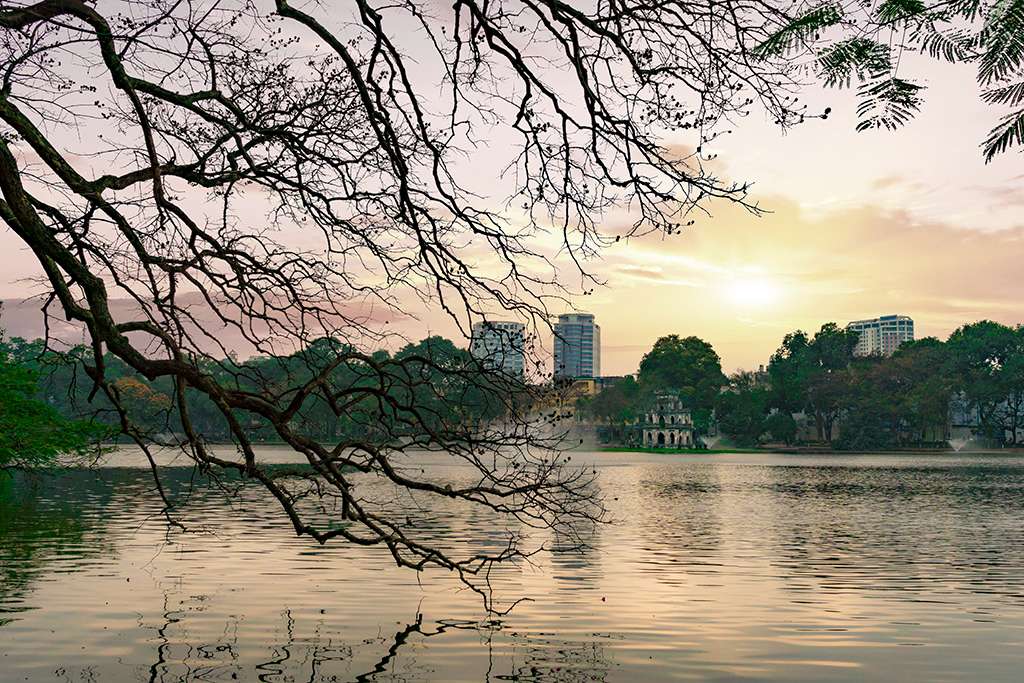
2. Water Puppet Show
Water puppetry is an ancient Vietnamese art form that originates from the northern regions of the country. In Hanoi, one of the best places to experience this unique cultural performance is at the Thang Long Water Puppet Theatre. The shows are staged on water, with puppets controlled by skilled artists hidden behind a screen, performing to traditional music and live narration. The stories depicted in these shows often involve themes of Vietnamese folklore, rural life, and legendary figures, offering both entertainment and insight into Vietnam’s traditions. The colorful, intricate puppets, coupled with the sound of bamboo flutes and drums, create a captivating atmosphere. It’s a mesmerizing experience that blends artistry, storytelling, and cultural heritage. For those visiting Hanoi, the water puppet show is a must-see, providing an unforgettable glimpse into one of Vietnam’s oldest theatrical traditions, and an ideal way to immerse yourself in the local culture.

3. The Old Quarter
The Old Quarter of Hanoi, known as the “36 Streets,” is a maze of narrow lanes and bustling alleyways, each named after the type of goods traditionally sold there. This area is a vibrant blend of old-world charm and modern life, where centuries-old architecture, from colonial buildings to ancient houses, stands side by side with trendy cafes and local boutiques. As you wander through the Old Quarter, the streets come alive with the sounds of motorbikes, street vendors, and the rich aromas of traditional Vietnamese dishes. Be sure to visit iconic landmarks like Dong Xuan Market, where you can find everything from souvenirs to fresh produce. The area also has hidden gems like ancient temples and family-owned shops that have been passed down through generations. Exploring the Old Quarter offers an immersive experience, where you can soak in the true essence of Hanoi’s lively spirit and deep-rooted history. It’s a perfect spot for both culture seekers and food lovers.
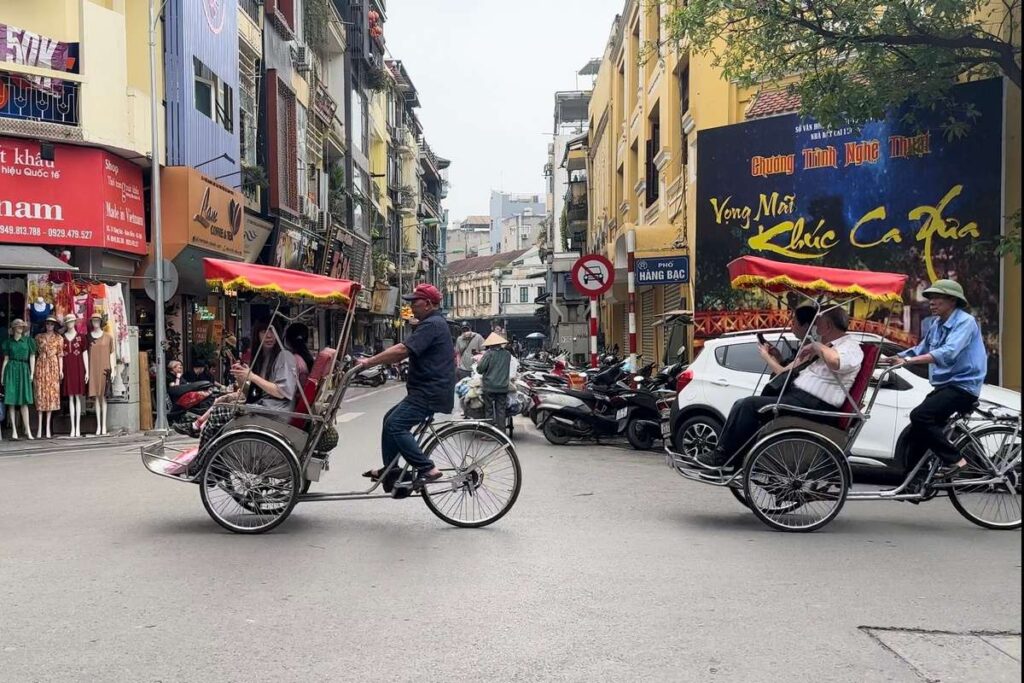
4. Ho Chi Minh Mausoleum
The Ho Chi Minh Mausoleum stands as a monumental tribute to Vietnam’s beloved leader, Ho Chi Minh, who led the country through pivotal times in history. Located in Ba Dinh Square, the mausoleum is a solemn and awe-inspiring site where visitors can pay their respects to the man who founded the Democratic Republic of Vietnam. The mausoleum itself is an imposing structure made of grey granite, and the atmosphere surrounding it is one of reverence and respect. Within, Ho Chi Minh’s embalmed body is displayed, preserved for public viewing. The nearby Ho Chi Minh Museum and the Presidential Palace offer more insights into the life and legacy of the leader, showcasing his personal artifacts, photos, and historical documents. Visitors can also explore the lush gardens surrounding the mausoleum, making it a peaceful place to reflect on Vietnam’s past. A visit to this site provides a deep sense of connection to Vietnam’s revolutionary history and national pride.
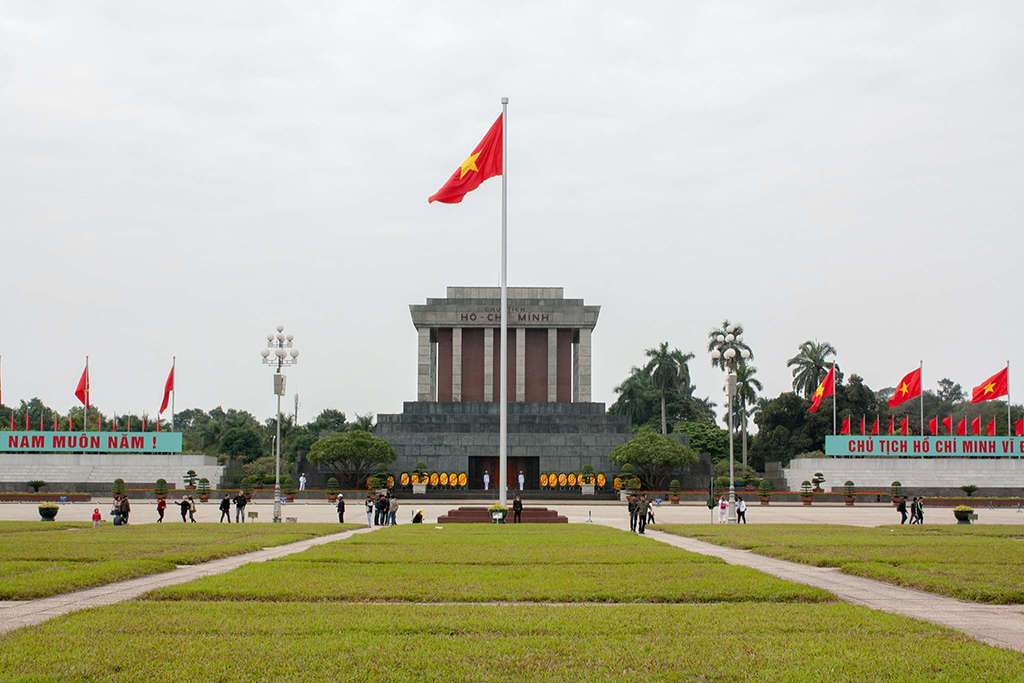
5. Temple of Literature
The Temple of Literature, Vietnam’s first national university, is an architectural masterpiece that dates back to 1070. It is dedicated to Confucius, along with scholars and sages, and stands as a testament to Vietnam’s long-standing commitment to education. The temple complex is composed of five courtyards, each offering a peaceful retreat with manicured gardens, ancient stone tablets, and elegant pavilions. The main sanctuary, where Confucius is honored, exudes a sense of serenity and reverence. Visitors can stroll through the temple’s well-preserved architecture, admire its intricate carvings, and learn about Vietnam’s scholarly traditions. The Temple of Literature is not only a place of cultural significance but also a symbol of Vietnam’s respect for learning and intellectual achievement. It’s an ideal spot to reflect on the rich history of Vietnamese education, making it a must-visit for anyone looking to understand the intellectual foundations of this fascinating country.
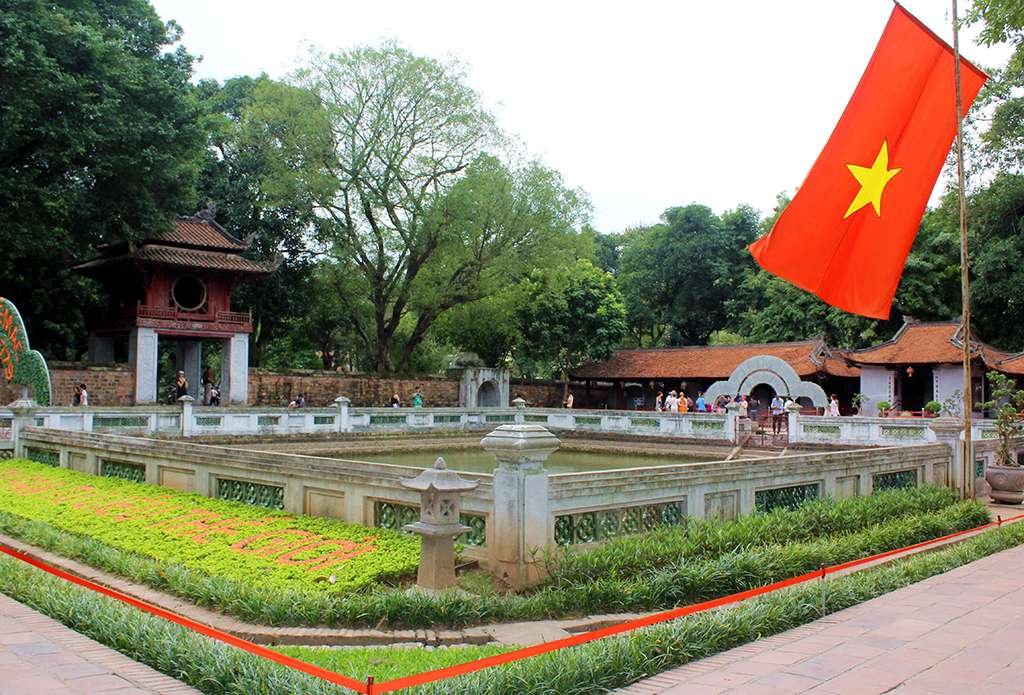
6. West Lake
West Lake, Hanoi’s largest lake, offers a serene escape from the city’s hustle and bustle. Surrounded by charming neighborhoods, the lake stretches over 500 hectares and is a popular spot for locals and tourists alike. You can rent a bike or take a leisurely walk along its expansive shores, where you’ll find stunning views of the water, lush greenery, and historic pagodas. The lake is also home to many cafes and restaurants offering beautiful lakeside views, perfect for enjoying a cup of traditional Vietnamese coffee or tea. For those seeking a bit of culture, the famous Tran Quoc Pagoda, located on a small island in the lake, is one of the oldest in Vietnam. With its tranquil atmosphere and scenic beauty, West Lake is ideal for a peaceful retreat or a romantic evening walk, providing a perfect balance between nature and city life. It’s a must-visit destination for those wanting to experience the calm heart of Hanoi.

7. Vietnam Museum of Ethnology
The Vietnam Museum of Ethnology is a fascinating cultural landmark that offers a deep dive into the diverse ethnic groups of Vietnam. Located in a peaceful area of Hanoi, the museum is home to over 15,000 artifacts, showcasing the traditional clothing, tools, and customs of Vietnam’s 54 ethnic minorities. The museum’s exhibitions are thoughtfully designed, offering a combination of indoor displays and outdoor installations, such as traditional ethnic houses, which provide a tangible sense of how different communities live. Visitors can explore the vibrant textiles, intricate jewelry, and everyday objects that reflect the rich cultural tapestry of the country. In addition, the museum also hosts interactive activities and educational programs that further immerse visitors in the traditions and history of Vietnam’s diverse peoples. Whether you’re a culture enthusiast or someone simply curious about the country’s heritage, the Vietnam Museum of Ethnology is an essential stop to better understand Vietnam’s multicultural identity.
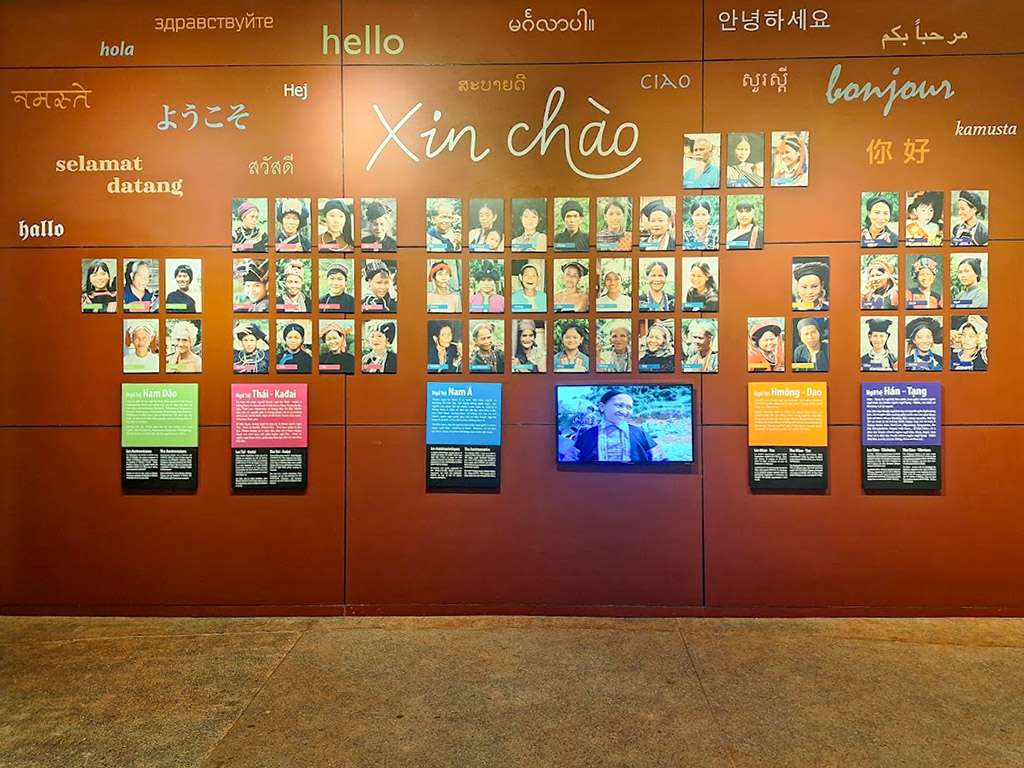
8. St. Joseph’s Cathedral
St. Joseph’s Cathedral, located in the heart of Hanoi’s Old Quarter, is a stunning example of French Gothic architecture. Built in 1886, this beautiful cathedral is one of the oldest and most iconic churches in Vietnam. Its towering spires, intricate stained glass windows, and grand façade make it a striking sight, blending European influence with the charm of Hanoi. Inside, the cathedral’s high vaulted ceilings and serene atmosphere create a peaceful space for reflection and prayer. The church’s vibrant religious life continues, with regular Mass services and occasional special events. The area surrounding St. Joseph’s Cathedral is lively, filled with cafés and shops, making it a great spot to explore. Whether you’re admiring the architecture, attending a service, or simply enjoying the lively atmosphere outside, St. Joseph’s Cathedral is a must-visit for both architecture enthusiasts and those looking to immerse themselves in Hanoi’s unique blend of history and culture.
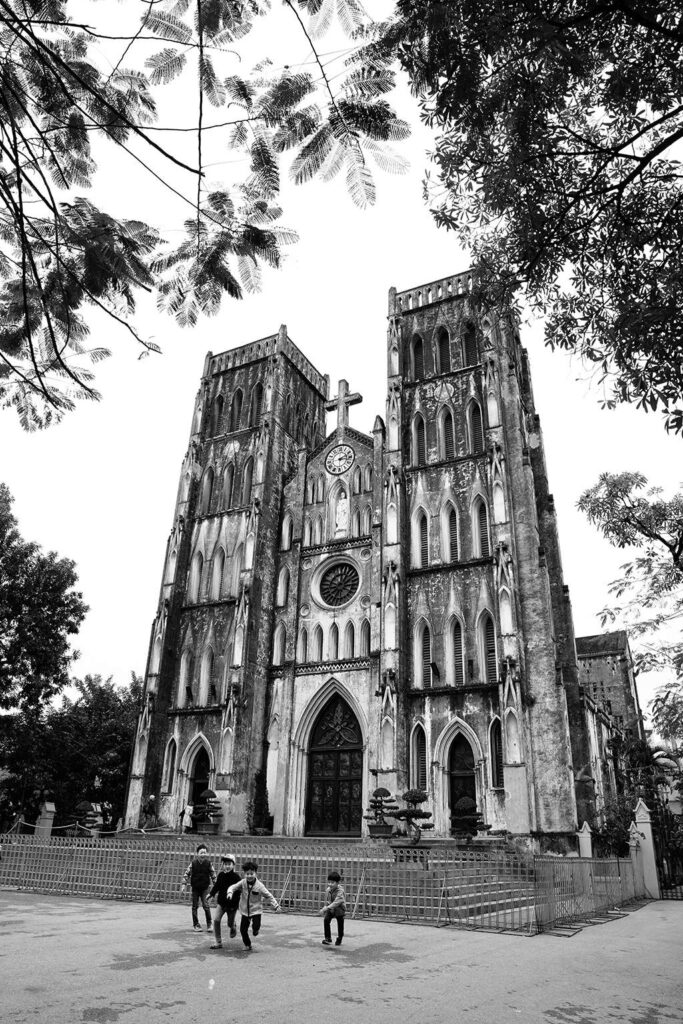
9. Hanoi Opera House
The Hanoi Opera House, built in 1911 during French colonial rule, is one of the finest examples of French architecture in Vietnam. Inspired by the grandeur of Paris’ opera houses, it features a blend of Baroque and neoclassical styles, with a stunning façade adorned with intricate columns and large windows. Inside, the opera house boasts a luxurious interior with rich red velvet seats, golden chandeliers, and ornate moldings that exude a sense of elegance and history. The acoustics here are superb, making it an ideal venue for world-class performances. Visitors can attend a variety of events, from classical music concerts to traditional Vietnamese performances. Even if you’re not attending a show, the building itself is a sight to behold and worth visiting for its historical significance and architectural beauty. The Hanoi Opera House stands as a cultural gem, showcasing Vietnam’s growing artistic scene while reflecting the legacy of its colonial past.
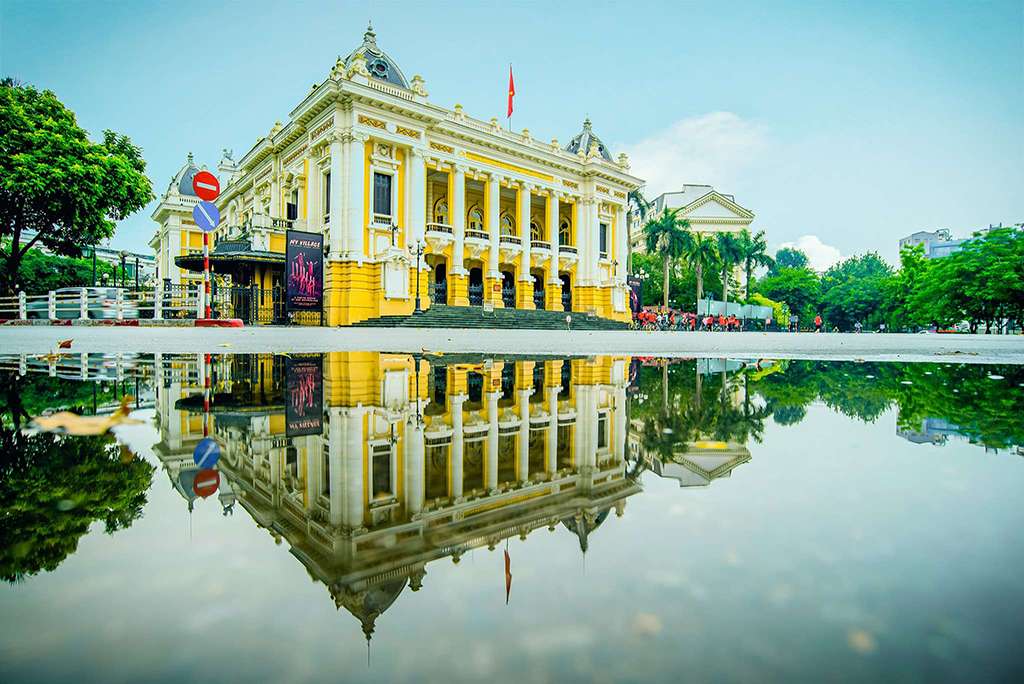
10. Hanoi Street Food
Hanoi is a paradise for food lovers, especially those eager to explore the rich flavors of Vietnamese street food. The city’s bustling streets are lined with food stalls serving up some of the country’s most iconic dishes. Pho, a fragrant noodle soup served with tender beef or chicken, is a must-try breakfast dish, while bun cha – grilled pork served with noodles and fresh herbs – is perfect for lunch. Don’t miss out on egg coffee, a unique Hanoi specialty made from whipped egg yolks, sugar, condensed milk, and strong coffee, creating a rich and creamy drink that’s as comforting as it is delicious. The Old Quarter is particularly famous for its vibrant food scene, where you can wander down narrow streets and sample local favorites like banh mi, spring rolls, and the flavorful cha ca (fried fish with turmeric). Exploring the street food of Hanoi is not only about tasting incredible dishes but also about experiencing the city’s lively culture and warm hospitality.
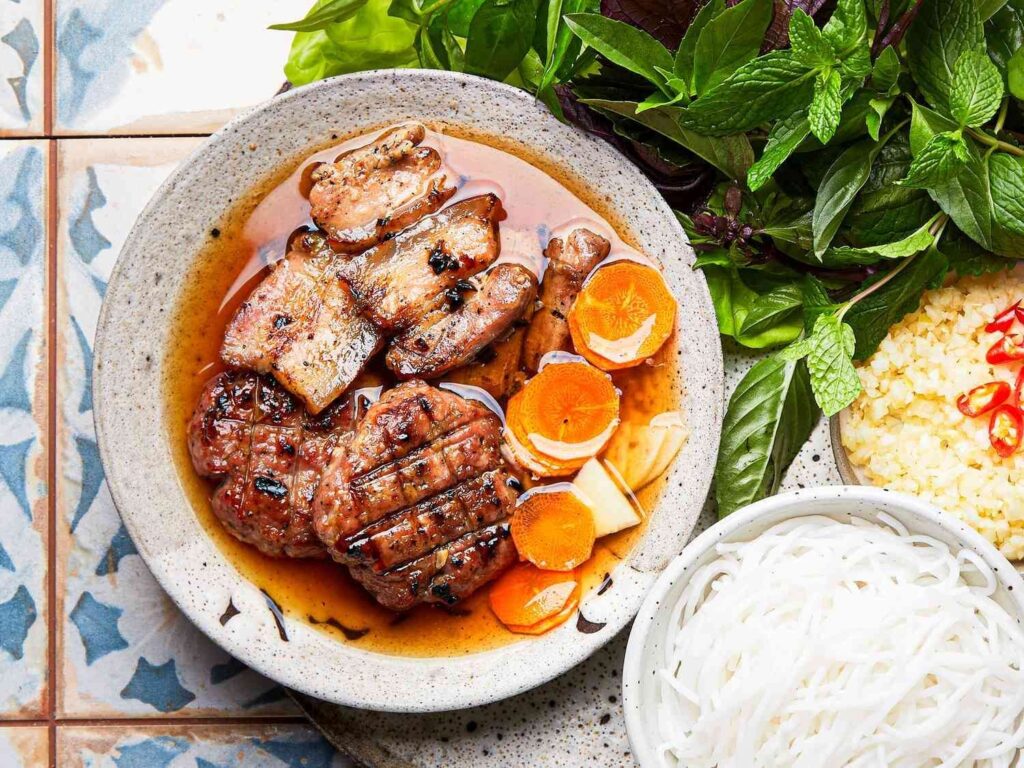
Conclusion
Hanoi offers a variety of attractions for every traveler. Whether you’re interested in history, culture, food, or just exploring, Hanoi has something for you. The city’s perfect blend of ancient traditions and modern life makes it a unique destination. Be sure to experience these top Hanoi highlights during your visit for an unforgettable trip!

